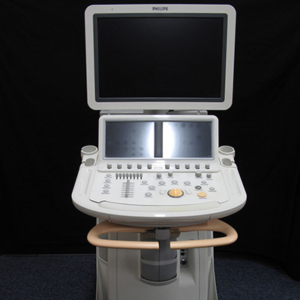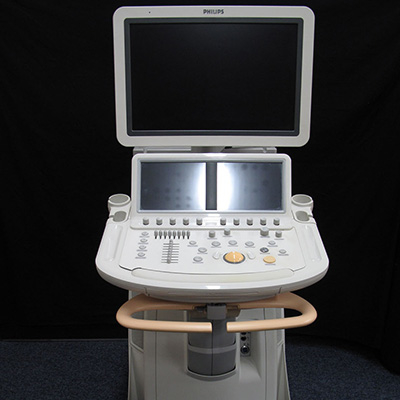Ultrasonography
An Ultrasonography procedure is a non-invasive (the skin is not pierced) diagnostic procedure used to assess soft tissue structures such as muscles, blood vessels, and organs. A clear conducting gel is placed between the transducer and the skin to allow for smooth movement of the transducer over the skin and to eliminate air between the skin and the transducer for the best sound conduction.
Ultrasonography are used to view internal organs as they function (in “real time,” like a live TV broadcast), and to assess blood flow through various vessels. Ultrasound procedures are often used to examine many parts of the body such as the abdomen, breasts, female pelvis, prostate, scrotum, thyroid and parathyroid glands, and the vascular system. During pregnancy, ultrasounds are performed to evaluate the development of the fetus. Different Ultrasound techniques exist for different conditions. Examples of some of the more common types of ultrasound examinations include the following:
Types of Ultrasonography
- Doppler Ultrasound – used to see structures inside the body, while evaluating blood flow at the same time. Doppler ultrasound can determine if there are any problems within the veins and arteries.
- Vascular ultrasound – used to see the vascular system and its function, including detection of blood clots.
- Echocardiogram – used to see the heart and its valves, and to evaluate the effectiveness of the heart’s pumping ability.
- Abdominal ultrasound – used to detect any abnormalities of the abdominal organs (i.e., kidneys, liver, pancreas, gallbladder), such as gallstones or tumors.
- Renal ultrasound – used to examine the kidneys and urinary tract.
- Obstetrical ultrasound – used to monitor the development of the fetus.
- Pelvic and Transvaginal ultrasound – used to find the cause of pelvic pain, such as an ectopic pregnancy in women, or to detect tumors or masses.
- Breast ultrasound – used to examine a mass in the breast tissue.
- Thyroid ultrasound – used to see the thyroid and to detect any abnormalities.
- Scrotal ultrasound – used to further investigate pain in the testicles.
- Prostate ultrasound – used to examine any nodules felt during a physical examination.
- Musculoskeletal ultrasound – used to examine any joint or muscle pain for conditions, such as a tear.
- Interventional ultrasound – used to help the surgeon during a minimally invasive operation or biopsy.


